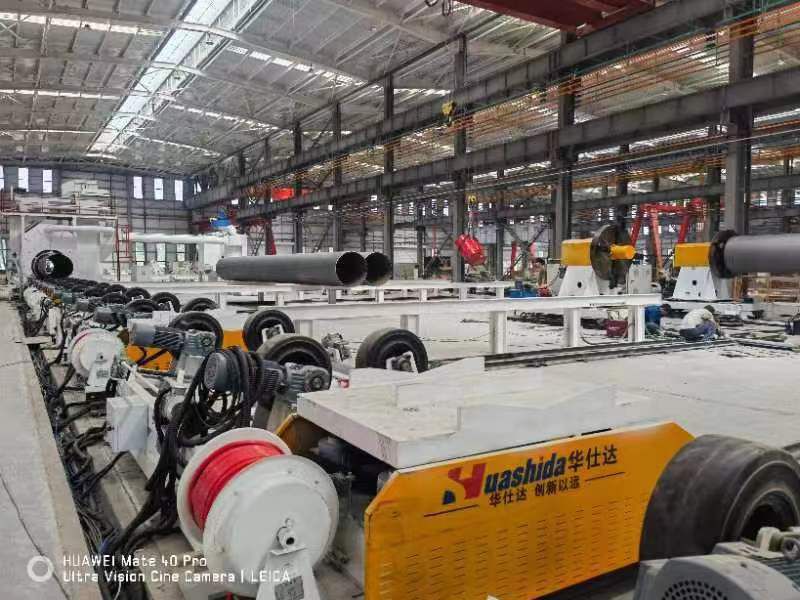Spray wound insulation pipes have a production history of over 50 years since their inception. In terms of production technology, they are a continuous improvement and development process, forming two different production processes, namely continuous process and intermittent process, which are both reliable and feasible. As an enterprise with its own core technology in the production equipment manufacturing of spray wound insulation pipes, Qingdao Huashida Machinery Co., Ltd. can provide mature spray wound insulation pipe production lines and routes to customers who produce spray wound insulation pipes, ensuring that the process technology is safe, feasible, high-speed, and efficient.
During the operation process of the spray wound insulation pipe production line, the steel pipe is shot blasted for rust removal, polyurethane spraying is formed, the polyethylene outer protective layer is extruded and wrapped, cooled, and the end is organized. The advantage of continuous process is to save production space. The advantage of the intermittent process is that the polyurethane reaction curing is stable, the polyurethane spray foaming molding, cooling for 24 hours, the polyurethane complete reaction ripening, the volume no longer changes, the strength reaches 300 Kpa, in the process of winding and transmission, the polyurethane rigid foam cell is not damaged, no volume deformation. During the winding process and the extrusion cooling process of the polyethylene protective layer, there is only one tensile stress present. At this time, the tensile stress must exist, which effectively solves the problem that the shear strength of polyurethane rigid foam and polyethylene outer sheath is not less than 200Kpa.

The spray wound insulation pipe manufactured by the spray wound insulation pipe production line has the following advantages:
1. The density of polyurethane is uniform and controllable.
2. Polyurethane rigid foam has no cavity.
3. The polyurethane molding surface is rough, with high affinity to the polyethylene outer protective layer, and a shear strength (friction) greater than 200Kpa. The thickness of polyurethane insulation layer and polyethylene outer protective layer can be adjusted according to the design.
5. High degree of automation control.
Revi: Happy National Day and Mid Autumn Festival!
Next: Huang Baodong's PERT Technology Application Report at the Uzbekistan National Design Institute